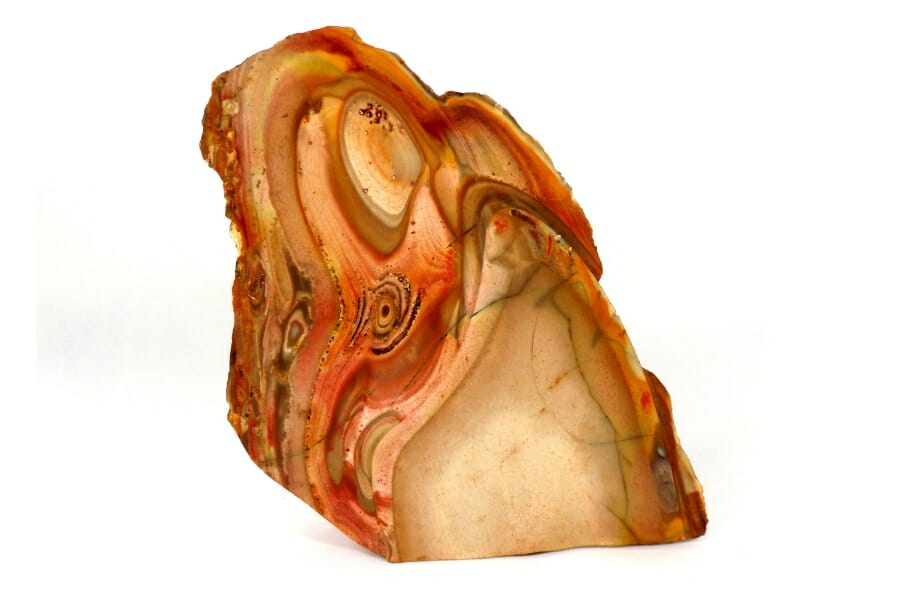Agates are a real treat for the eyes! Arizona’s extensive and varied landscape makes it an excellent place to look for agates, but it takes knowledge and experience to find the exact spots where these beautiful stones can be found.
Agate can be hidden in rocky areas, which makes it challenging for someone without experience. The vastness of Arizona’s desert areas can make it hard for newcomers to find their way around and explore.
Without the right direction, people could waste hours looking in the wrong places. Lucky for you agate hunters, there are now a lot of resources to help you to increase your chances of success!
What is Arizona Agate?
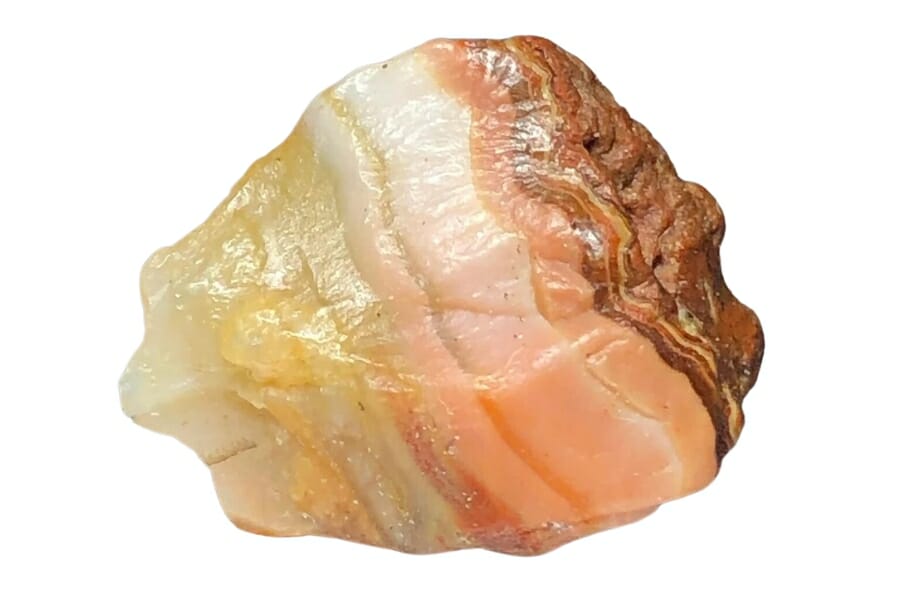
Agates are known for their beautiful patterns and colors, from how mineral deposits and geological processes work together. They come in various colors, from soft pastels to bright and bold ones.
Each piece is different, with intricate bands, swirls, and inclusions that are interesting to collectors and fans alike. Agates have a natural beauty that never fails to impress, whether used to make jewelry or decorations.
Agate is made when minerals are deposited in holes in rocks. This can be caused by volcanic activity or the slow filling of holes in sedimentary rocks. As solutions rich in silica seep into these holes, they slowly crystallize into layers of microcrystalline quartz.
You can use this article as your guide to determine how much agates are worth.
Moss agates
Moss agate is known for its unique inclusions resembling moss or ferns. It’s a type of chalcedony, which is a microcrystalline quartz. It’s usually clear to opaque and has a glossy shine.
The green spots in moss agate are caused by minerals like iron oxide or manganese oxide, which give the stone its unique look. Moss agate can be green, blue, or brown; its patterns are often the same as miniature landscapes or forests.
It’s possible to find moss agates in Arizona, mostly in areas with volcanic activity, such as ancient lava flows and volcanic ash deposits.
Fire agates
Fire agate is a beautiful and highly sought-after type of agate that gets its name from how its colors change in the light, like flames. It’s a type of chalcedony with a unique internal structure that lets light and colors move around lively.
The fiery colors of the stone include reds, oranges, yellows, and sometimes even greens and blues. Fire agate gets its beautiful play of colors from thin iron and manganese oxide layers that build up inside the stone.
When light passes through these layers and interacts with them, it scatter and creates a beautiful show of iridescence and spectral colors.
Arizona is renowned as one of the primary locations to find fire agate. The state’s deserts and mountainous regions, particularly in the southeastern part, are rich in fire agate deposits.
Blue lace agates
Blue lace agate is known for its thin bands of blue and white. It’s a type of chalcedony with a structure made up of tiny crystals that makes it look clear. The blue color of blue lace agate comes from small amounts of copper in the stone.
The banding patterns, ranging from light blue to white, create a lacework-like beauty. Blue lace agate’s calming and soothing energy makes it popular for spiritual and metaphysical uses. It’s often carved into beads, cabochons, or other decorative shapes and used in jewelry.
While blue lace agate is not as commonly associated with Arizona as other agate varieties, it can be found in some state regions. Agate enthusiasts may come across blue lace agate in parts of Arizona that have chalcedony deposits.
Red agates
Red agate, also called carnelian, is known for its deep red color. It’s a short, opaque stone with a waxy or glassy shine. The iron oxide impurities in the silica-rich solutions that make up agate give it its red color.
The gemstone’s color can range from deep red to reddish brown, and it often has banding patterns and layers of transparency that make it look better. Red agate is often used in jewelry, carvings, and other decorative items because it represents courage, vitality, and passion.
The key factors in our recommendations are:
- The deep experience and understanding of our team about the area
- Recommendations from local groups and clubs
- How easy it is to get the a particular location
- Safety and potential hazards when collecting
- Weighing private and public locations
- The ability for both experienced and novice agate enthusiasts to find great samples
With these factors in mind we’ve been able to put together a fantastic list that just about anyone can use!
DON'T MISS OUT ON ANY GREAT FINDS!
While you're out searching for Agates you're going to find A LOT of other interesting rocks and minerals along the way. The last thing you want to do is toss out something really interesting or valuable. It can be easy to misidentify things without a little guidance.
We've put together a fantastic field guide that makes identifying 140 of the most interesting and valuable rocks and minerals you will find REALLY EASY. It's simple to use, really durable, and will allow you to identify just about any rock and mineral you come across. Make sure you bring it along on your hunt!
The Best Spots To Find Agates in Arizona
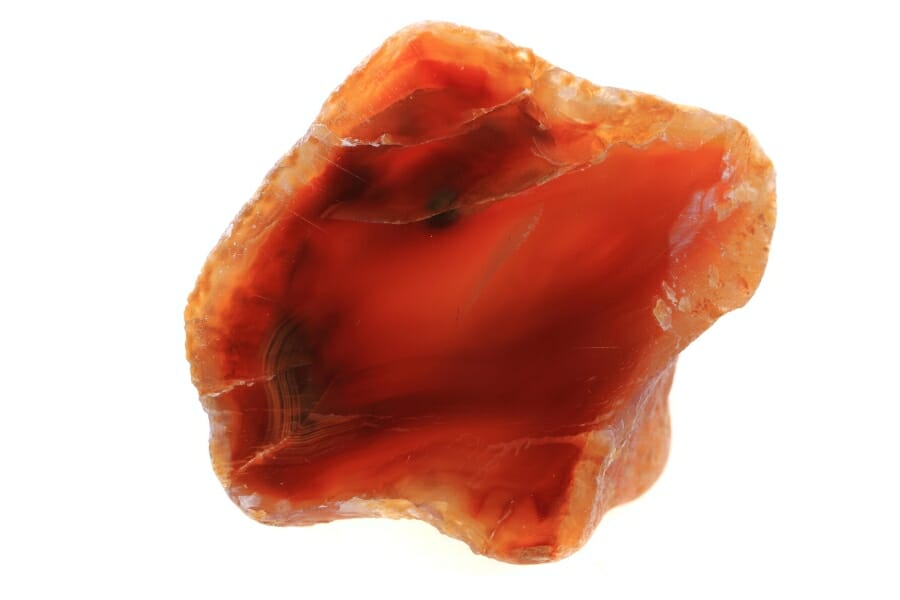
Here are some places in the state where you can find agates. Even though there are many great locations to find gems in Arizona, not all can have agates.
Always Confirm Access and Collection Rules!
Before heading out to any of the locations on our list you need to confirm access requirements and collection rules for both public and private locations directly with the location. We haven’t personally verified every location and the access requirements and collection rules often change without notice.
Many of the locations we mention will not allow collecting but are still great places for those who love to find beautiful rocks and minerals in the wild without keeping them. We also can’t guarantee you will find anything in these locations since they are constantly changing.
Always get updated information directly from the source ahead of time to ensure responsible rockhounding. If you want even more current options it’s always a good idea to contact local rock and mineral clubs and groups
Agua Fria River
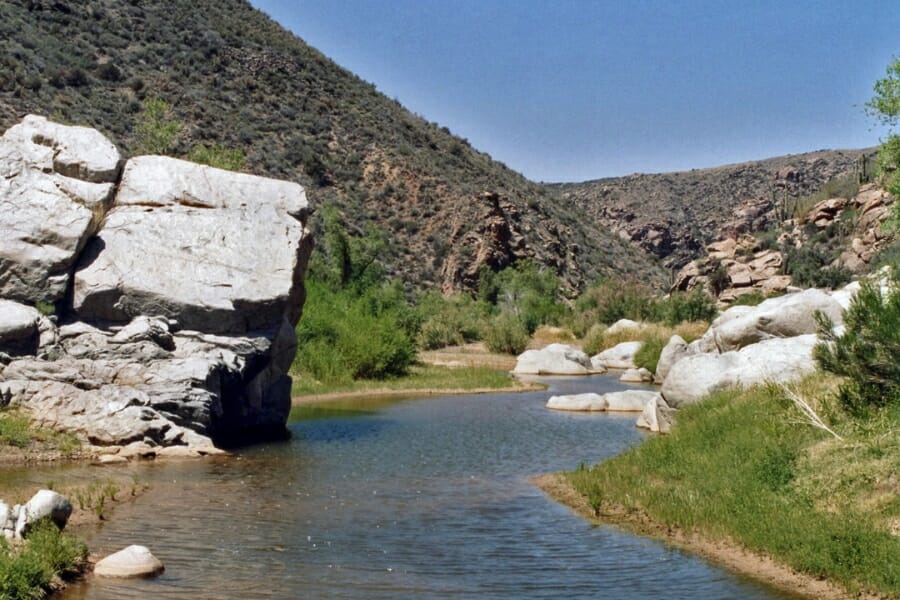
The Agua Fria River flows through diverse landscapes, including scenic canyons, desert terrain, and volcanic rock formations, creating an ideal environment for the creation and deposition of agate.
The Agua Fria River’s ancient volcanic activity has resulted in basalt and rhyolite rocks, which are known to host agate deposits. These rocks, formed from volcanic lava and ash, contain voids and cavities that are perfect for the crystallization of agate over time.
Its proximity to Phoenix and the surrounding metropolitan areas provides easy accessibility, allowing agate hunters to embark on day trips or weekend excursions.
Before you bring your agate crystals home from Arizona, know the most updated rules about collecting there.
Where we found agates in Agua Fria River
Agates can be found along the Agua Fria River in Arizona in various locations where suitable geological conditions exist. When searching for agates along the river, focusing on areas with exposed bedrock, gravel bars, and eroded banks is beneficial.
Apache National Forest
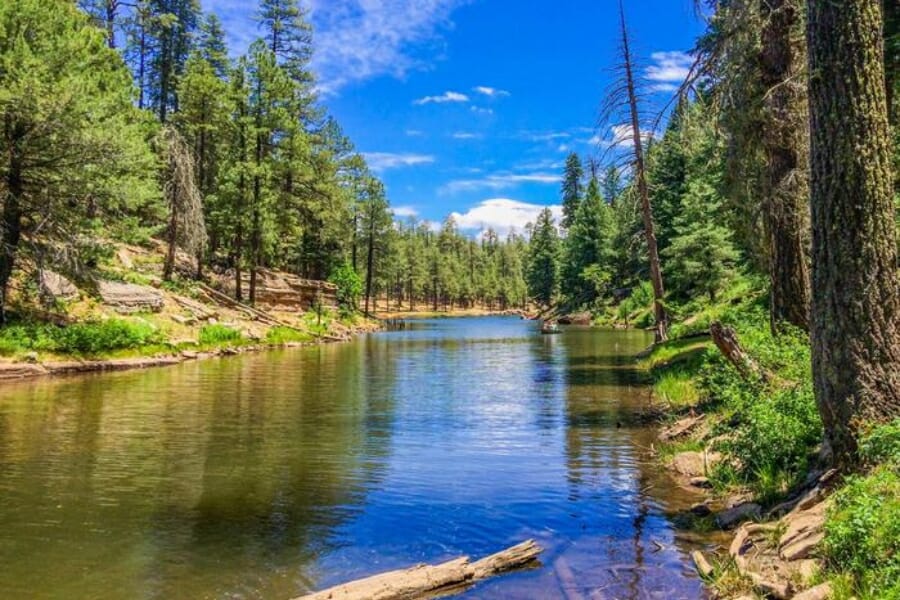
Spanning over two million acres, the Apache National Forest encompasses diverse landscapes, including mountains, canyons, and high desert terrain, which provide a conducive environment for forming and occurring agates.
The vastness and varied topography of the Apache National Forest make it an appealing destination for agate enthusiasts. Its remote and less populated areas offer opportunities for solitude and uninterrupted exploration.
Where we found agates in the Apache National Forest
The Apache National Forest has numerous potential locations to search for agates. The forest is known for its volcanic rock formations, such as basalt and rhyolite, which serve as hosts for agate formation.
Ash Spring Canyon
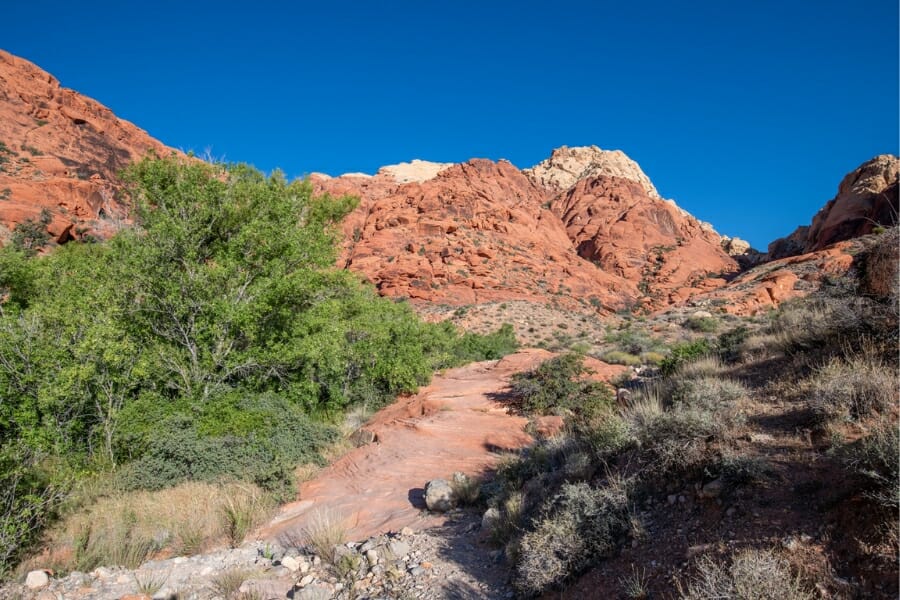
Ash Spring Canyon is renowned for its potential to yield a variety of agates. The geological formations present in the area, including volcanic rocks and sedimentary deposits, provide an ideal environment for the formation and occurrence of agates.
The erosive action of the canyon and the unique combination of geological forces have exposed layers of rocks that could contain agate. The canyon’s beauty adds to the overall experience, making it an immersive and exciting place for people who like agates.
Where we found agates in the Ash Springs Canyon
You can find beautiful agates in Ash Spring Canyon by looking in creek beds, gravel bars, and on the faces of bare rocks.
Cabeza Prieta Mountains
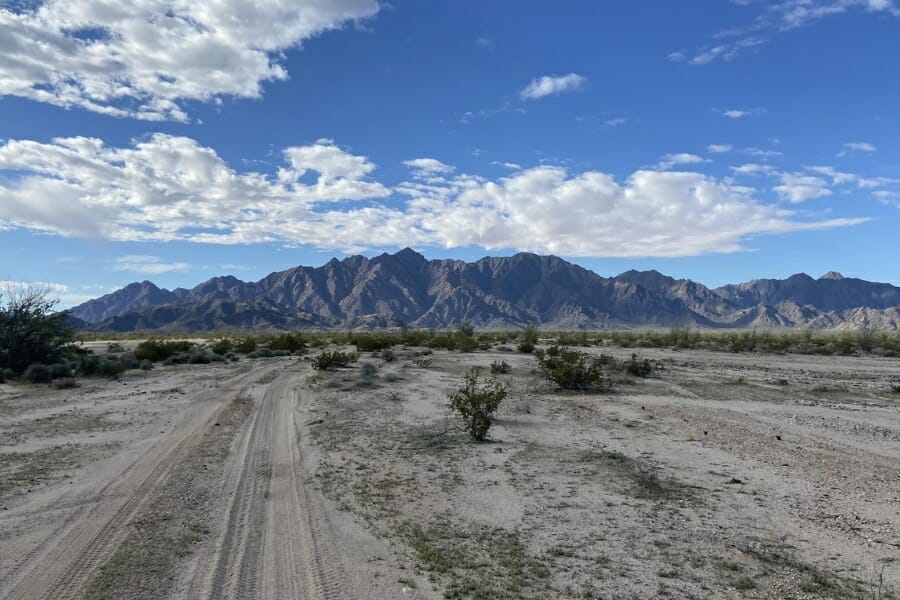
The Cabeza Prieta Mountains feature a combination of volcanic rocks, sedimentary layers, and metamorphic formations, offering a rich and varied environment to explore.
There are volcanic rocks, sedimentary layers, and metamorphic formations in the Cabeza Prieta Mountains, offering a rich and varied environment to explore. In addition to volcanic rocks, the mountains’ diverse geology includes sedimentary layers that can provide unique agate formations.
Where we found agates in Cabeza Prieta Mountains
Exploring the mountainous terrain, canyons, and washes within the Cabeza Prieta Mountains can unveil hidden treasures, where agates may be found in various colors, patterns, and formations.
Echo Cliffs
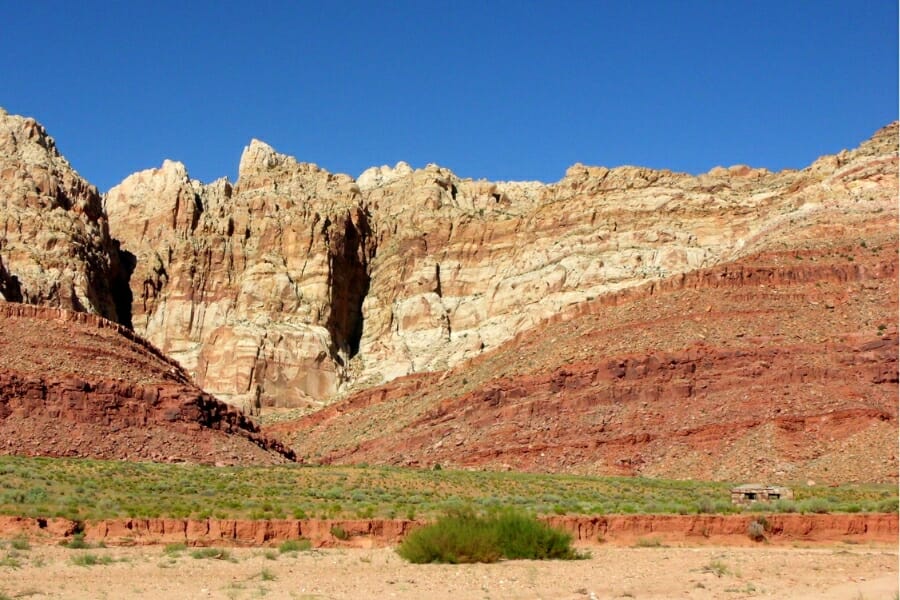
The diverse rock formations within Echo Cliffs contribute to the potential for discovering a variety of agate specimens. The cliffs consist of layered sedimentary rocks, such as sandstone and shale, which can harbor agate deposits. Agates found in these formations often display intricate banding patterns and vibrant colors.
Volcanic activity in the area led to the formation of rocks that hold agates. This makes it possible to find unique agates made by interacting with different volcanic processes.
Where we found agates in Echo Cliffs
One potential location for finding agates in Echo Cliffs is along the cliffs’ base. Erosion and weathering processes expose layers of sedimentary rocks, providing opportunities for agates to be revealed.
Other Great Places To Find Agates in Arizona
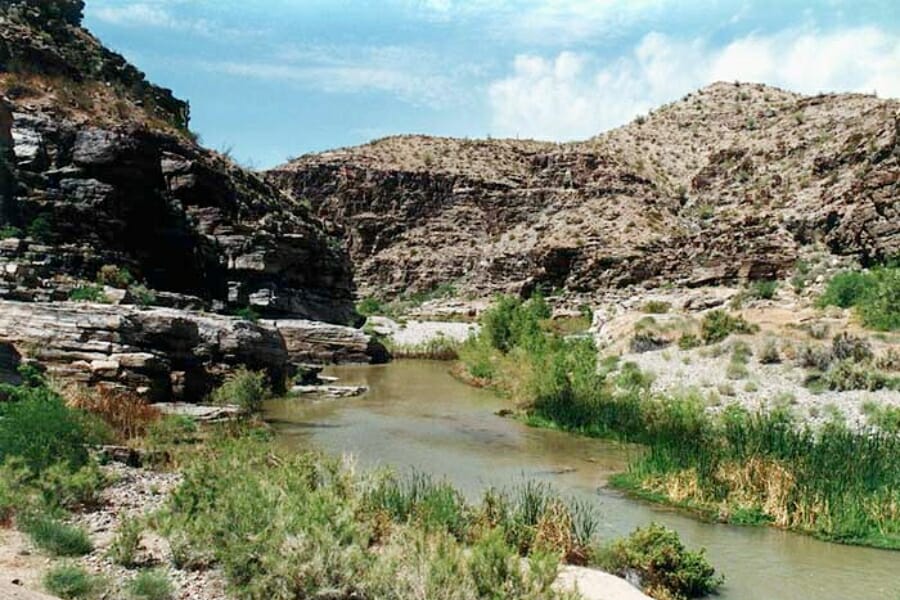
We’ll give you more ideas after we’ve mentioned the best places to look for agates in Michigan. To make things easier, we put them in order by county.
Our recommendations by county
| County | Location |
| Gila | Cypress Thicket |
| Gila | Roosevelt Reservoir |
| Gila | Coolidge Dam |
| Graham | Black Rock |
| Graham | Copper Reef Mountain |
| Greenlee | Ash Spring Mountain |
| Greenlee | Peloncillo Mountain |
| Greenlee | Ward Canyon |
| Greenlee | Limestone Canyon |
| Greenlee | Crystal Mountain |
| Greenlee | Sunset Peak |
| Greenlee | Mulligan Peak |
| Greenlee | Brister Willow Springs |
| Maricopa | Saddle Mountain |
| Maricopa | Cave Creek |
| Maricopa | Castle Hot Springs |
| Maricopa | Champie Ranch |
| Maricopa | Eagle Trail Mountains |
| Mohave | Mississippi Wash |
| Mohave | Lake Meade |
| Mohave | Meadow Creek Pass |
| Mohave | Sitgreaves Pass |
| Mohave | Black Mountain |
| Pinal | Martinez Canyon |
| Yavapai | Cathedral Cave |
| Yavapai | Santa Maria River |
| Yavapai | Date Creek |
| Yavapai | Burro Creek |
| Yavapai | Sycamore Canyon |
Additional areas you can find agates
We want to ensure your search works because Arizona is a big state. You need to look in these places where agates are often found.
Fresh rock exposures
Fresh rock exposures are very popular with agate collectors because they are more likely to find clean and colorful specimens. When new parts of the rock are exposed, either by natural geological processes or human actions, it allows people to find agate formations that haven’t been worn away.
One advantage of fresh rock exposures is that they offer a higher probability of finding agates with well-defined banding patterns and vivid colors. The natural erosion and weathering over time can degrade agate specimens, making the banding less distinct and the colors less vibrant.
Rivers and riverbanks
Rivers and riverbanks are favored locations for agate collectors due to the unique processes within these dynamic environments. Agates are often found in riverbeds because the constant flow of water acts as a natural polisher, removing the outer layers of rocks and exposing the gemstones within.
Water movement in rivers also plays a crucial role in the concentration and distribution of agates. More durable than surrounding rocks, agates can resist erosion and remain in the riverbed as other materials are washed away.
Streams and creeks
Streams and creeks are highly favorable locations for agate collectors due to their unique geological processes and constant water flow. The continuous water movement in these watercourses is a natural sorter, carrying away lighter materials and leaving behind heavier agate specimens.
The erosion caused by the water flow exposes new sections of the streambed, unveiling hidden agate deposits. Over time, the action of water breaks down rocks and sediments, gradually revealing agates that were once embedded within.
Common Agate-Hunting Questions
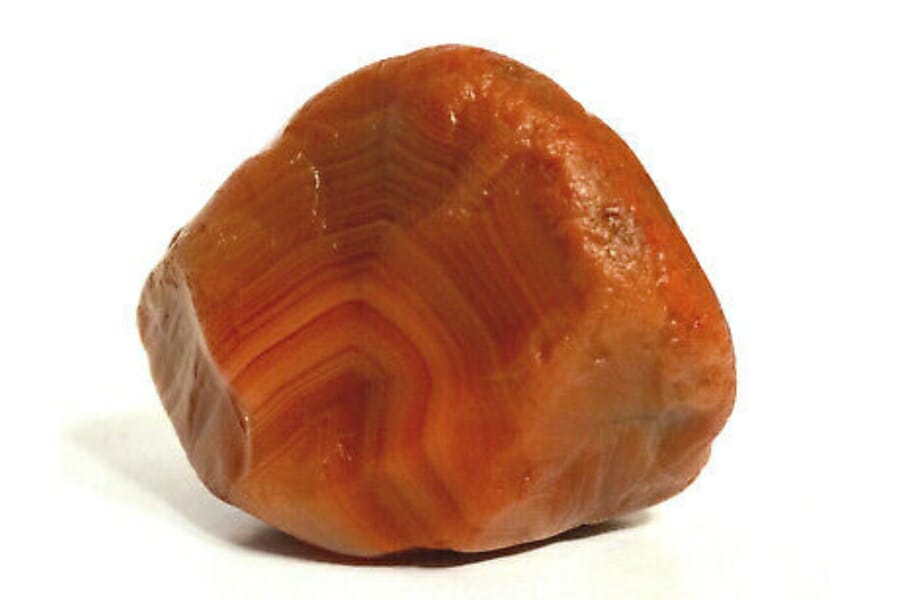
People often ask the following questions about agates in Arizona, and it’s essential to know the answers.
Is it illegal to collect agate in Arizona?
You can collect agates in Arizona as long as you do so legally. When you’re in a public place, it would be best if you follow the rules. Make sure you have permission before going onto private land.
The Best Places To Buy Agates In Arizona

Not everyone likes spending all day outside looking for agates. Sometimes, you only need a display or another beautiful agate piece to complete your collection. Here’s where you can buy agate crystals in Arizona.
- Arizona Gems and Minerals – 6370 E State Rte 69, Prescott Valley, AZ 86314
- Celestial Moon – 6555 E Southern Ave Suite 1006, Mesa, AZ 85206
- Miners Rock Shop – 1103 W Fairmont Dr, Tempe, AZ 85282
- Soul Stone Vibrations – 2055 W State Rte 89A Suite C, Sedona, AZ 86336
- Sweet Medicine Shop – 6990 E Shea Blvd #217, Scottsdale, AZ 85254
If you have any recommendations for our list please leave a comment below!

